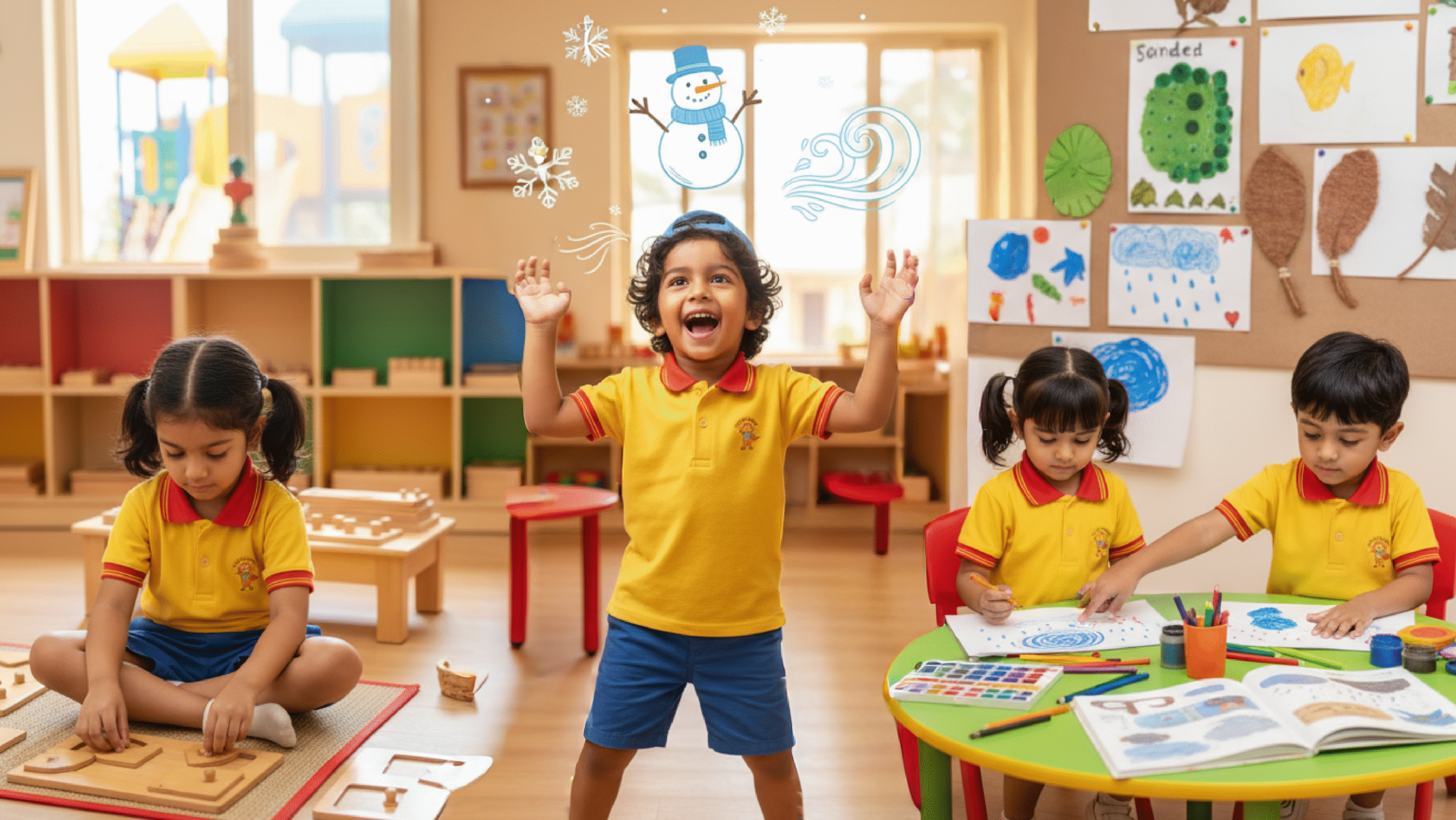- Email info@shantijuniors.com
- Phone +91 99796 66660

If you have begun your preschool search, you have likely come across different teaching philosophies Montessori, Playway, and Reggio Emilia.
All promise joyful learning, but what exactly do they mean? And more importantly, which one is right for your child?
Choosing a preschool isn’t just about classrooms and fees; it is about finding an environment that matches your child’s learning style, personality, and pace. In this guide, we will decode these three popular approaches used in Indian preschools and help you understand how they differ, and how Shanti Juniors blends the best of all three.
The Montessori Method
Founder: Dr. Maria Montessori (Italy, early 1900s)
Philosophy: “Help me do it myself.”
Montessori classrooms focus on independence and hands-on learning. Children learn by exploring materials beads, blocks, puzzles that build fine motor skills and problem-solving ability.
What Montessori Looks Like in Practice
Montessori Strengths
Things to Keep in Mind
The Playway Method
Philosophy: “Play is the highest form of learning.”
The Playway approach, often popular in Indian preschools, focuses on learning through fun. Instead of sitting at desks, children learn via games, songs, storytelling, and pretend play.
What Playway Looks Like in Practice
Playway Strengths
Things to Keep in Mind
The Reggio Emilia Approach
Origin: Reggio Emilia, Italy (post–World War II)
Philosophy: “The child has a hundred languages.”
This approach views children as curious researchers. It values creativity, collaboration, and self-expression through art, storytelling, and projects.
What Reggio Emilia Looks Like in Practice
Reggio Emilia Strengths
Things to Keep in Mind
Comparison Snapshot
| Aspect | Montessori | Playway | Reggio Emilia |
| Core Focus | Independence, self-paced learning | Learning through play | Creativity & collaboration |
| Teacher Role | Observer, guide | Facilitator, participant | Co-learner, collaborator |
| Classroom Setup | Ordered, minimalistic | Colourful, vibrant | Artistic, project-rich |
| Learning Tools | Montessori materials (wooden blocks, beads) | Toys, music, stories | Art, nature, real-world projects |
| Best For | Children who enjoy order & concentration | Active, imaginative learners | Expressive, curious children |
| Age Group Fit | 3–6 years (Nursery–KG) | 2–4 years (Playgroup–Nursery) | 4–6 years (Jr. KG–Sr. KG) |
Which One Should You Choose?
Every child is different, some love quiet exploration, others thrive in movement and stories.
Here’s how you can decide:
For toddlers (2–3 years), a Playway start is often best, it is warm, sensory, and fun.
As your child grows (3–6 years), blending Montessori focus + Reggio creativity gives a well-rounded foundation.
Rather than focusing on labels, look for schools that combine structure, play, and curiosity giving your child both freedom and focus.
The Shanti Juniors Preschool Approach: The Best of All Worlds
At Shanti Juniors, we believe every child learns differently. That’s why our curriculum is a balanced blend of:
Our classrooms are designed to be safe, stimulating, and joyful. Teachers act as gentle guides creating experiences that make children love learning, not fear it.
Parent Takeaway
You don’t need to be an expert in education methods. What matters is that your child feels happy, secure, and curious every day they go to school.
A good preschool should nurture all sides of your child – the thinker, the talker, the creator, and the dreamer.
That is what we do at Shanti Juniors – nurturing your child’s curiosity with care.
Final Thought
Whether you choose Montessori, Playway, or Reggio, the best preschool is the one that understands your child.
Admissions for 2026 are open now!
Book a centre visit today and experience how Shanti Juniors blends the joy of play with the power of purpose.